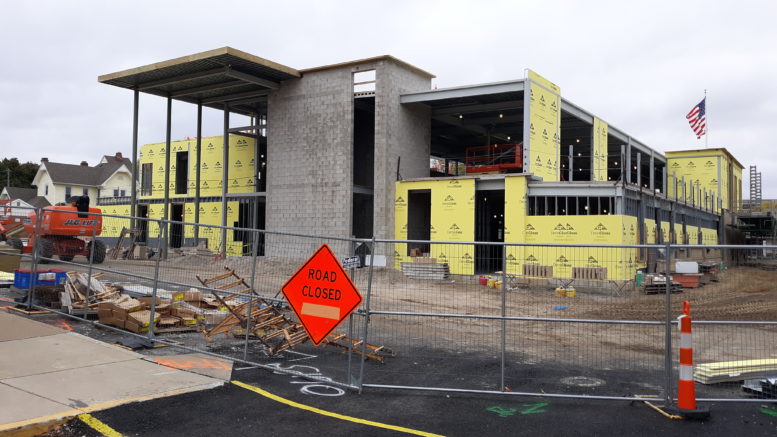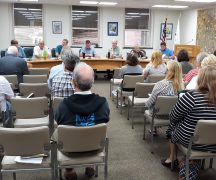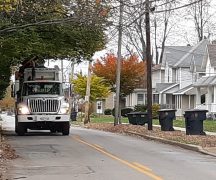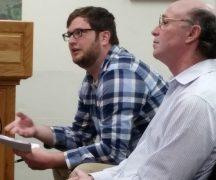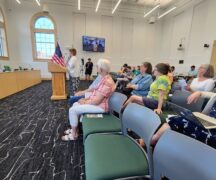By JAN LARSON McLAUGHLIN
BG Independent News
Bowling Green officials are facing the challenge of filling the gap between the $11 million estimate and the $14.5 million actual cost of the new city administration building.
Since the city approved the project in the fall of 2020, the costs have shot upward, many due to COVID-19, said Municipal Administrator Lori Tretter. She explained the increased costs and a possible solution to help fill the gap during the quarterly financial update to City Council members last week.
“Essentially, we’re going to borrow from ourselves,” Tretter said.
The plan is for the city to take an advance of $1 million from the water and sewer improvement fund and shift that to the building fund.
The city has used this type of gap funding in the past, though not often, Tretter said.
The water and sewer improvement fund is quite healthy, and the borrowing of $1 million should not adversely affect proposed water and sewer projects, she said.
The plan would be for the city to pay back the money to the water and sewer improvement fund over the next 10 years, she said.
Tretter described how building costs at the 305 N. Main St. site have skyrocketed, fed by supply chain issues, inflation and labor shortages. Even with $1 million budgeted for contingencies, the costs were over expectations.
“It has been challenging to the entire construction industry,” she said.
Some of the increased costs being seen are:
- Construction materials, including steel products, lumber and plywood, copper and brass items, aluminum, plastic products, gypsum products, and diesel fuel.
- Site conditions. When construction began at the site, it was found there was substandard soil for structural supports, bedrock in the way of utility infrastructure, and a 4-foot concrete slab instead of the expected 6-inch slab.
- Inflationary costs.
- Long lead times in ordering building supplies.
All of those factors have led to a total cost of $14.5 million for the new city building – with $11.1 million for construction, and $3.4 million for ancillary costs such as architectural design, engineering, construction manager-at-risk, surveying, permits, inspections, contingencies, furniture, fixtures and equipment.
Tretter assured council that the city is working to rein in costs as much as possible.
“We are constantly looking at ways to save money,” she said.
At the same time, city officials want to make sure the long-awaited new administration building is well suited to serve citizens and city employees.
“This is a multi-decade community effort,” Tretter said.
In other business at last week’s City Council meeting, citizen Les Barber spoke against the zoning code update that would create “pedestrian residential” zoning in some older areas of the city. That zoning category would allow some small businesses to be located in residential areas.
That zoning would be “inappropriate, unnecessary, intrusive and discriminatory,” Barber said.
The zoning update does not address the real problem in some older sections of the city, Barber said, of unregulated student rental properties.
Also at the meeting, citizen Jim Evans asked City Council why his proposal for a municipal groundwater field was rejected. He spoke of the devastation in Florida from Hurricane Ian and the problems with water supplies.
Bowling Green is vulnerable to natural disasters such as tornadoes and flooding, and should prepare for such problems, Evans said. He asked why his proposal had not been acted on by the city.
City Council President Mark Hollenbaugh told Evans that the issue would not be discussed that evening.
“You’re not going to get an answer tonight,” Hollenbaugh said.
In other business, the city’s new arborist, Adrien Lowien-Kirian, was introduced to City Council. She was previously employed by the Wood County Park District.


